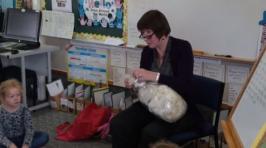Technological knowledge
The technological knowledge strand guides teachers to develop learning activities that support students to develop specialist knowledge of what they will need to design and develop outcomes. As students design and develop outcomes, they will draw on technological knowledge as and when it is needed. For example, when designing a new school playground, students will explore where timbers, metals, and plastics are used. By knowing about the properties of these materials, they will understand why they are used in different places and for different purposes.
Students develop technological knowledge particular to technological enterprises and environments and in relation to how and why things work. They learn how functional modelling is used to evaluate design ideas. Prototyping is used to evaluate the fitness for purpose of systems and products as they are developed. An understanding of material properties, uses and development is essential to understanding how and why products work the way they do. Similarly, an understanding of the constituent parts of systems and how these work together is essential to understanding how and why systems operate in the way they do.
 Components within the technological knowledge strand
Components within the technological knowledge strand

The technological knowledge strand is comprised of three components. Support students to make links between the components.
The pages below provide further detail, key ideas, examples, and related resources for each component.
Students carry out processes and practices to improve what they are designing and developing. They make models to test if parts of their concept works and they can see the model functioning/working (or not) the way they intended. Once testing is complete, a prototype tests the outcome's fitness for purpose. It allows the student to evaluate the outcome against the brief and its requirements, ensuring its success.
These exist in the world as a result of human design. Understanding the relationship between how they are composed and how they perform is essential understanding for students as they design and develop their own technological products.
Students learn about how component parts work together to control materials, energy, and/or information. Systems exist everywhere in the world around us. For example, buildings, cars, towns, websites, and digital devices. They are designed by humans to improve our environment and to function without further human design input. Students need to understand the purpose and nature of systems so they can design and develop their own successful systems.
For achievement objectives, teacher guidance, and strategies for engaging students, visit the indicators of progression (IOPs):
